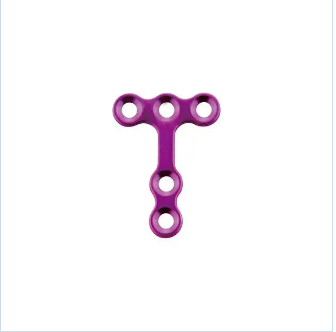In the realm of oral and maxillofacial surgery, maxillofacial plates are an indispensable tool. These plates are used to stabilize fractured bones, aid in the healing process, and provide support for dental implants. In this comprehensive guide, we will delve into the world of maxillofacial plates, including the versatile Maxillofacial T Plate.
What is a Maxillofacial Plate?
A maxillofacial plate is a surgical device made from materials like titanium or stainless steel, designed to be inserted into the facial skeleton to stabilize bone fragments. They are commonly used in facial trauma, reconstructive surgeries, and dental implant procedures.
Different Types of Maxillofacial Plates
1. Lag Screw Plates are employed to compress bone fragments together, facilitating healing and stability. They have threaded holes for lag screws, which when tightened, create compression at the fracture site. This type of plate is often used in mandibular fractures where the bone needs to be closely aligned and compressed for effective healing.
2. Reconstruction Plates are utilized for bridging large defects in the maxillofacial region. They are sturdier than other plates and can be contoured to fit the patient’s unique anatomy, making them ideal for significant bone loss scenarios. Reconstruction plates are typically used in more complex surgeries where there has been extensive damage to the facial skeleton, such as in the case of major trauma or following tumor removal.
3. Locking Compression Plates (LCP) combine the advantages of lag screw and reconstruction plates. They have a locking mechanism for the screws and compression holes for lag screws, suiting them for complex fractures needing both stability and compression. This type of plate provides a high degree of stability, making it suitable for complicated fractures where multiple pieces of bone need to be aligned and secured.
4. Maxillofacial T Plate is a specialized plate shaped like a “T” with multiple screw holes. It offers excellent stability for midface fractures and can also anchor dental implants or support bone grafts during reconstruction. The unique design of the T Plate allows it to be securely fixed in areas where other plates might not be as effective, such as in the delicate midface region.
Uses of Maxillofacial Plates
Maxillofacial plates are invaluable in treating facial injuries and deformities. They ensure that bone fragments are properly aligned and immobilized, allowing for natural healing. In cases of trauma or following tumor removal, they help reestablish the integrity of the facial skeleton. Additionally, they play a crucial role in securing dental implants, ensuring their stability and longevity.
Post-operative Care and Recuperation
After the placement of a maxillofacial plate, meticulous post-operative care is essential for a successful outcome. Patients should adhere to the following guidelines:
• Medication: Take all prescribed medications, including antibiotics and analgesics, to prevent infection and manage pain. It’s important to finish the full course of any antibiotics prescribed, even if the wound looks healed beforehand.
• Diet: Follow a soft diet to avoid placing excessive pressure on the surgical site. Gradually transition to solid foods as healing progresses, usually over a period of several weeks. Avoid hard, crunchy foods that could disturb the healing process.
• Hygiene: Maintain impeccable oral hygiene to prevent infection. Gently rinse with saline solution as advised by your surgeon, being careful not to disturb the sutures or surgical site.
• Follow-up Appointments: Attend all follow-up appointments to monitor healing and ensure the plate is functioning correctly. These visits are crucial for identifying potential complications early on and making necessary adjustments to the treatment plan.
• Rest: Get ample rest to facilitate the healing process. Avoid strenuous activities that may jar the surgical site, such as running or heavy lifting, for at least six weeks after surgery.
In conclusion, maxillofacial plates, including the versatile Maxillofacial T Plate, are critical tools in oral and maxillofacial surgery. They provide stability, support healing, and play a significant role in reconstructive procedures. Proper post-operative care is paramount to ensure optimal recovery and long-term success. By understanding the different types of plates and their specific uses, both patients and medical professionals can work together towards achieving the best possible surgical outcomes.

Media Contact
Company Name: Jiangsu Shuangyang Medical Instrument Co., Ltd.
Email: Send Email
Country: China
Website: https://www.jsshuangyang.com/